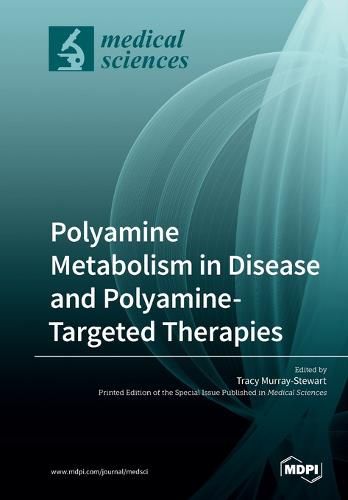Readings Newsletter
Become a Readings Member to make your shopping experience even easier.
Sign in or sign up for free!
You’re not far away from qualifying for FREE standard shipping within Australia
You’ve qualified for FREE standard shipping within Australia
The cart is loading…






This title is printed to order. This book may have been self-published. If so, we cannot guarantee the quality of the content. In the main most books will have gone through the editing process however some may not. We therefore suggest that you be aware of this before ordering this book. If in doubt check either the author or publisher’s details as we are unable to accept any returns unless they are faulty. Please contact us if you have any questions.
Spermine, spermidine, and putrescine constitute the mammalian polyamines, abundant polycations with essential roles in critical cell functions. As such, intracellular polyamine concentrations are tightly regulated through biosynthesis, catabolism, and transport. The multifaceted effects of polyamine dysregulation have contributed to its role in multiple disease processes but have also implicated it as target for preventive or therapeutic intervention. The correlation between oncogene-mediated elevation of polyamine biosynthesis and cancer is well established, and induced polyamine catabolism contributes to carcinogenesis that is associated with certain forms of chronic infection and/or inflammation. In addition to cancer, polyamines are involved in the pathologies of neurodegenerative diseases, parasitic and infectious diseases, wound healing, ischemia/reperfusion injuries, and certain age-related conditions, as polyamines concentrations are reported to decrease with age. As in cancer, polyamine-based therapies for these conditions are an area of active investigation. With recent advances in immunotherapy, interest has increased regarding polyamine-associated modulation of immune responses as well as potential immunoregulation of polyamine metabolism, the results of which could have relevance to multiple disease processes. The goal of this Special Issue of Medical Sciences is to present the most recent advances in polyamine research as it relates to health, disease, and/or therapy.
$9.00 standard shipping within Australia
FREE standard shipping within Australia for orders over $100.00
Express & International shipping calculated at checkout
This title is printed to order. This book may have been self-published. If so, we cannot guarantee the quality of the content. In the main most books will have gone through the editing process however some may not. We therefore suggest that you be aware of this before ordering this book. If in doubt check either the author or publisher’s details as we are unable to accept any returns unless they are faulty. Please contact us if you have any questions.
Spermine, spermidine, and putrescine constitute the mammalian polyamines, abundant polycations with essential roles in critical cell functions. As such, intracellular polyamine concentrations are tightly regulated through biosynthesis, catabolism, and transport. The multifaceted effects of polyamine dysregulation have contributed to its role in multiple disease processes but have also implicated it as target for preventive or therapeutic intervention. The correlation between oncogene-mediated elevation of polyamine biosynthesis and cancer is well established, and induced polyamine catabolism contributes to carcinogenesis that is associated with certain forms of chronic infection and/or inflammation. In addition to cancer, polyamines are involved in the pathologies of neurodegenerative diseases, parasitic and infectious diseases, wound healing, ischemia/reperfusion injuries, and certain age-related conditions, as polyamines concentrations are reported to decrease with age. As in cancer, polyamine-based therapies for these conditions are an area of active investigation. With recent advances in immunotherapy, interest has increased regarding polyamine-associated modulation of immune responses as well as potential immunoregulation of polyamine metabolism, the results of which could have relevance to multiple disease processes. The goal of this Special Issue of Medical Sciences is to present the most recent advances in polyamine research as it relates to health, disease, and/or therapy.